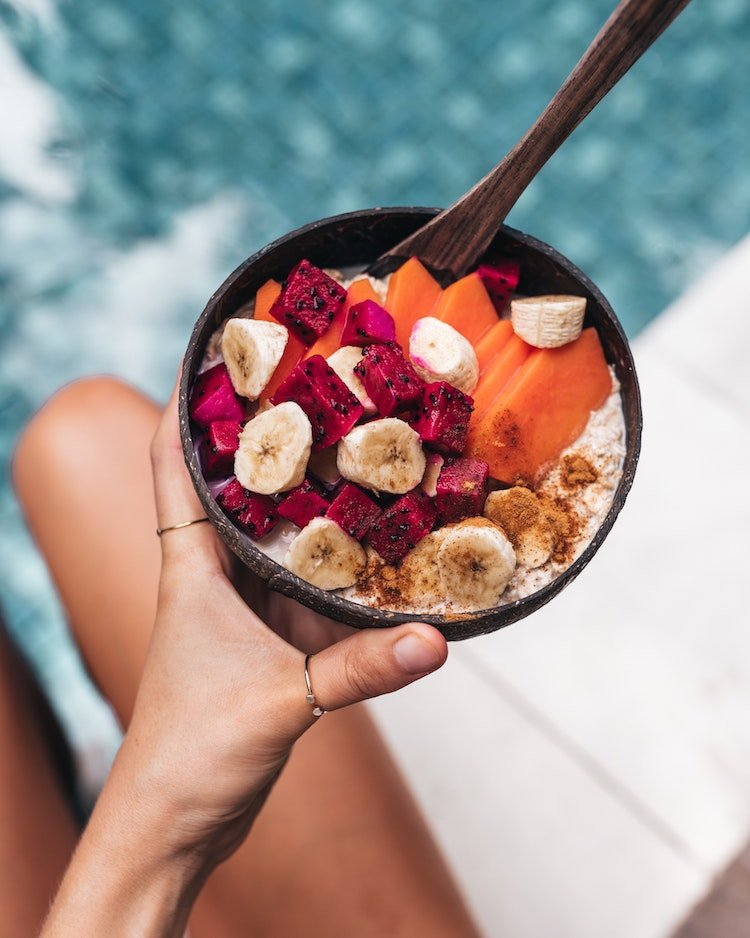What To Eat For Glowing Skin
We know that food is foundational to aging healthfully and glowing skin. In preparation for this blog, I read studies looking for the overall best diet for skin and aging. Not surprisingly, a whole foods plant-based diet takes the cake when it comes to skin and aging; yes, this means a mostly vegan diet. Take it from me, this can be hard.
Here’s a strategy I employ with my kiddo whose favorite foods are noodles and chocolate. Whenever we eat, there are plant foods involved; if we’re having toast it’s served with sliced tomatoes. Noodles are served with carrots on the side, pizza with cucumbers, ice cream with berries, and chocolate with cashews. We focus on what we should be eating rather than shouldn’t be eating. With this said, the science is clear: a diet abundant in plant foods sets our body and skin up for success.
Mostly a Whole Foods Plant-Based Diet
This is a diet that includes mostly plant foods in their whole and unprocessed form, like vegetables, fruits, beans, lentils, nuts, seeds, whole grains, and a small amount of healthy fats. It does not include animal products like, red meat, chicken, eggs, dairy or fish, nor processed foods and sweets.
A mostly-plant diet ensures that you are getting a whole lot of antioxidants, vitamins, minerals, and other nutrients necessary to maintain younger cells and youthful appearing skin. This plant-based diet also ensures that we are not eating a lot of saturated fats from animal proteins which have been shown to damage cells and accelerate cellular aging (1).
There are many schools of thought surrounding the consumption of animal products. Most of the research I consulted supports a more plant-based approach when it comes to aging, because these foods are rich in unique plant chemicals (2). The Mediterranean Diet has been studied and used to represent a healthy diet that supports longevity; fish is included. Fermented animal products like yogurt (sugar free), hard cheeses, and consciously sourced animal products have their place in a mostly whole foods approach to diet.
Sample Menu for a Whole Foods Plant Based Diet
Ezekial sprouted toast with almond butter or sliced tomatoes with salt & pepper.
Brown rice/quinoa & lentils with greens, other veggies, and avocado, salt & pepper.
Steamed broccoli, sweet potato, green salad topped with chickpeas, olive oil & salt.
Snacking: brazil nuts, celery/carrots and humus, and fresh fruit.
Month of March Challenge!!!
Aim for 9-13 Servings of Plant Foods Every Day
We need about 9-13 servings of whole plant foods if we want to prevent chronic disease. A typical serving is only half a cup of cooked vegetables, one cup of raw leafy vegetable, or a medium-sized piece of fruit. It would be best to aim for every meal of the day to have about 3-4 servings of plant foods so that at three general meals per day (not including snacks), you would make your serving requirement on a daily basis.
Let me know at your next treatment how the challenge worked for you, and your favorite whole foods and plant-based diet treats.
Resources


